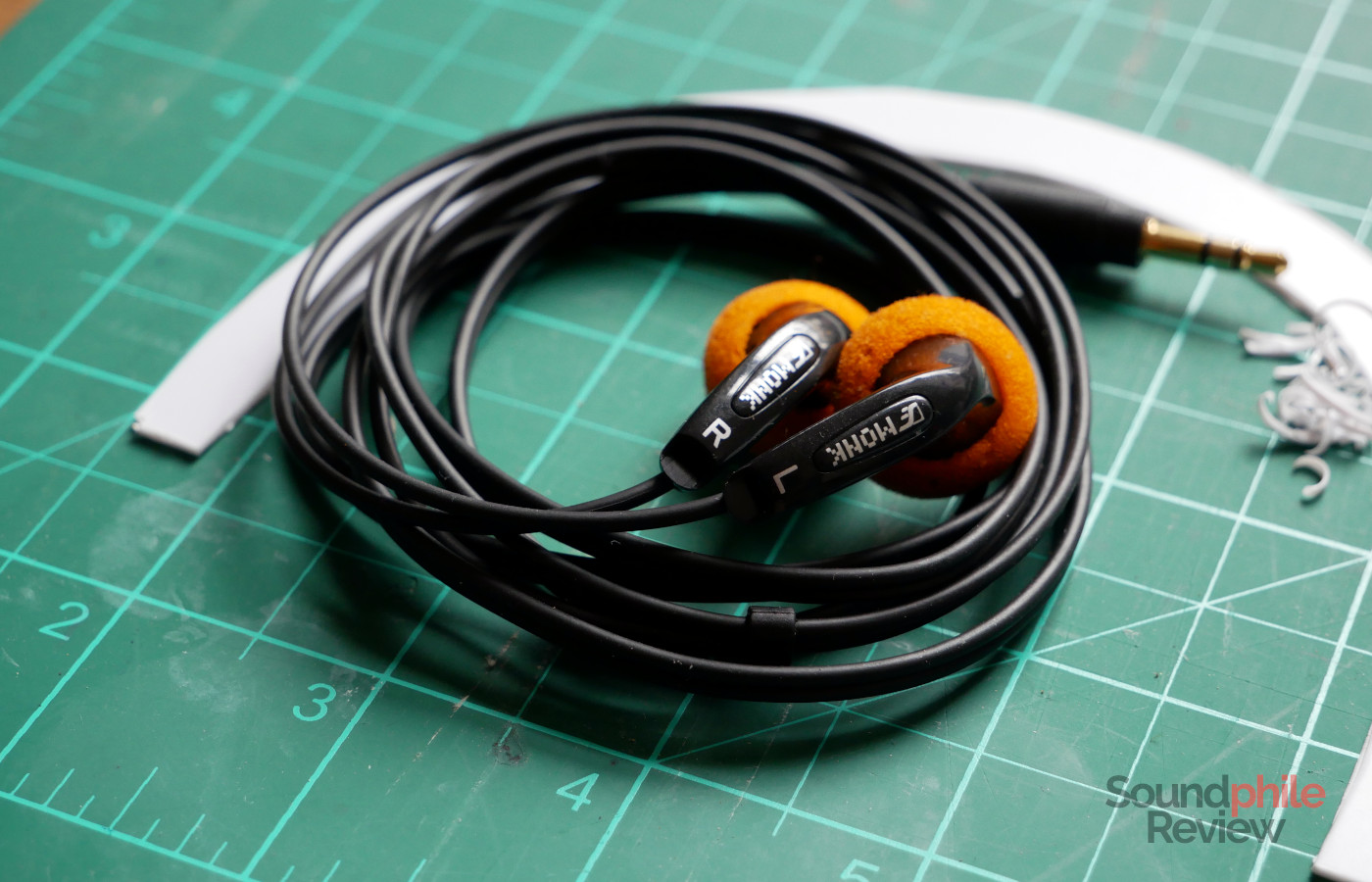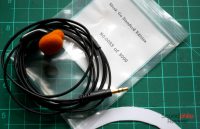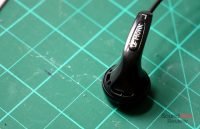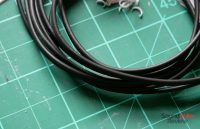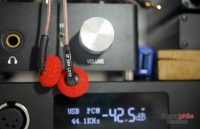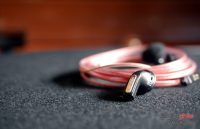The Monk are Venture Electronics’ best-known product, and for good reason: these $5 earbuds took the world of earphones by storm showing that you can actually deliver great sound quality for little price. Of course they work as “gateway drugs” to the higher-tiered products in the manufacturer’s line-up, but this doesn’t stop them from being amazing in their own right. The company now refreshed this best seller with a new version called the Venture Electronics Monk Go, which should make a few adjustments to the original to provide a more “IEM-esque” sound. As a limited release, the Monk Go are an experiment that might spawn a new permanent line-up of earbuds by VE.
Disclaimer: I received a free sample directly from Lee at VE. The Monk Go retail(ed) for $5. Additional info on VE’s website.
TL;DR: recap
| Pros |
Cons |
| + Comfortable
+ Affordable + Dynamic, physical sound |
– Treble is a bit overwhelming |
Rating: 6.5/10
Packaging & Accessories
The Monk Go I received came in a simple plastic bag with an adhesive label saying “Monk Go Standard Edition, No.0053 of 3000”. They also came with a bag of accessories, VE’s Ex Pack, containing nine sets of foams: three densities (light, medium, dense) in three colours (blue, red, orange).
Design & Comfort
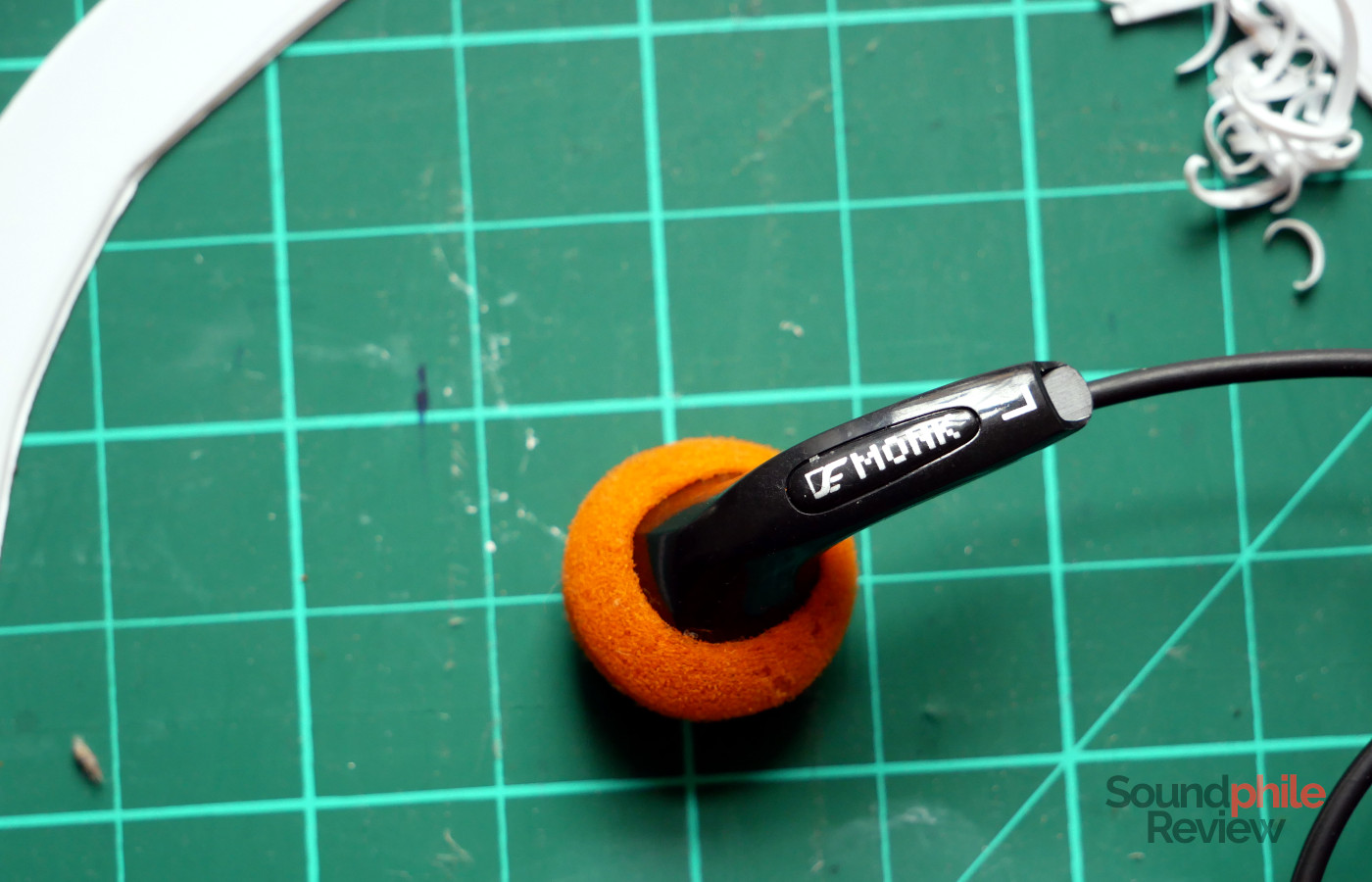
There’s not much to say in this regard that I haven’t already said about the Monk Plus – everything is the same, so I invite you to read that review! In short: build quality is good and so is comfort, but isolation is (as expected) null.
The cable is nice and soft, though it does have some microphonics.
Sound & Specs
I tested the Monk Go with a Topping DX7 powering a Drop THX AAA 789. Music files were mostly CD-ripped FLACs.
Venture Electronics Monk Go |
| Frequency response | N/A |
| Impedance | N/A |
| Sensitivity | N/A |
Lee’s original target with the Monk Go was to create an earbud that had a frequency response closer to that of an in-ear; bear in mind that Lee’s vision on this is that IEMs are inherently brighter and with a larger focus on treble, while earbuds are warmer. This said, I can say that the Monk Go are indeed more treble-focused than previous earbuds by VE, though they’re not quite sounding like real IEMs.
The Monk Go have all the technical features you’d expect from earbuds: soundstage is massive, with a sense of space that is close to that of open-back headphones; imaging is not bad, as instruments have easily recognisable positions across the left-right spectrum; instrument separation is sufficient, but overall limited.
Bass is less prominent than in previous editions and is just north of neutrality. It doesn’t have much presence in the sub-bass area, but mid-bass is well present in the mix. Detail is more than decent, although it gets a bit lost as soon as the track gains complexity – layering is not the best quality of the Monk Go. Physicality is quite good though, much like the other VE products. Speed is also more than decent for the price.
Midrange is quite bright, thanks to a bump in the 4-5 kHz area that gives it quite an edge. It gives electric guitars, violins and other high-pitched instruments quite some energy. Apart from this peak, the rest is quite well balanced. Detail is fine, even though – again – it gets a bit lost once the track becomes complex, but it’s overall commendable. I quite like the fact that there’s a very good physicality.
Despite being the differentiating element of the Monk Go, treble turns out to be the most problematic area. In a bid to make it more prominent in the mix it was made too prominent, ending up with an aggressive, sharp treble. A track like Simulation by Meniscus, with all the cymbals it has, is an example of this, as cymbals overpower the rest. This is despite treble being well detailed and extended, with a good sense of air; the multiple peaks in the area (around 8 kHz and 12 kHz, from what I can tell) are quite harsh and can’t be ignored.
Venture Electronics Monk Go Comparisons
The only comparison that really makes sense is the one with the Monk Plus. They’re much warmer than the Monk Go, with more mid-bass (and slightly more depth, too) and better speed. Midrange is warmer, too, so it sounds more balanced in comparison, though I hear a similar level of detail. Treble is more emphasised on the Monk Go, which have a similar extension but better detail. Soundstage is comparable in width, but deeper on the Monk Go, while imaging is similar and so is instrument separation.
Final Thoughts
Lee wanted to create an earbud that sounded like an IEM and in a way he got close to that. The Venture Electronics Monk Go really do sound closer to an IEM than to previous earbuds from the company. The only problem is that in order to do this they overdid the treble, making it quite emphasised – and making the Monk Go less enjoyable as a result. As the unit I received is part of an initial limited batch, there is hope that potential future batches will see further tuning work to reduce treble a bit and make them more balanced. As they are, the Monk Go can be pleasing, but you have to choose your tracks carefully.
Despite its flaws, I quite like the Venture Electronics Monk Go in principle and I laud the effort by VE to change its house sound to something different and more audacious. The Monk Go are quite a change in how VE earbuds sound and I look forward to hearing more – I always love experiments and this one seems to go in the right direction.

